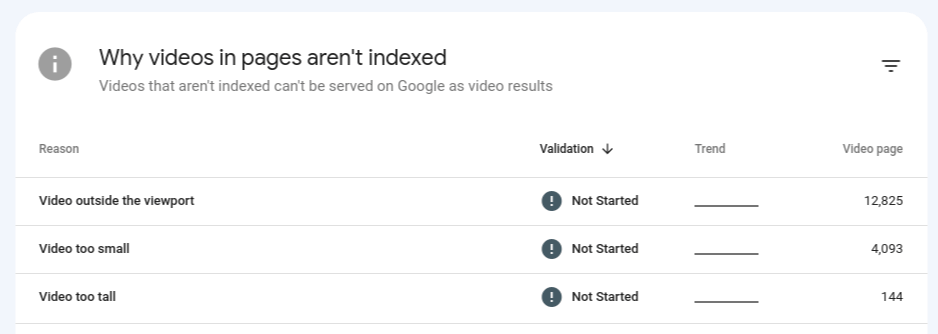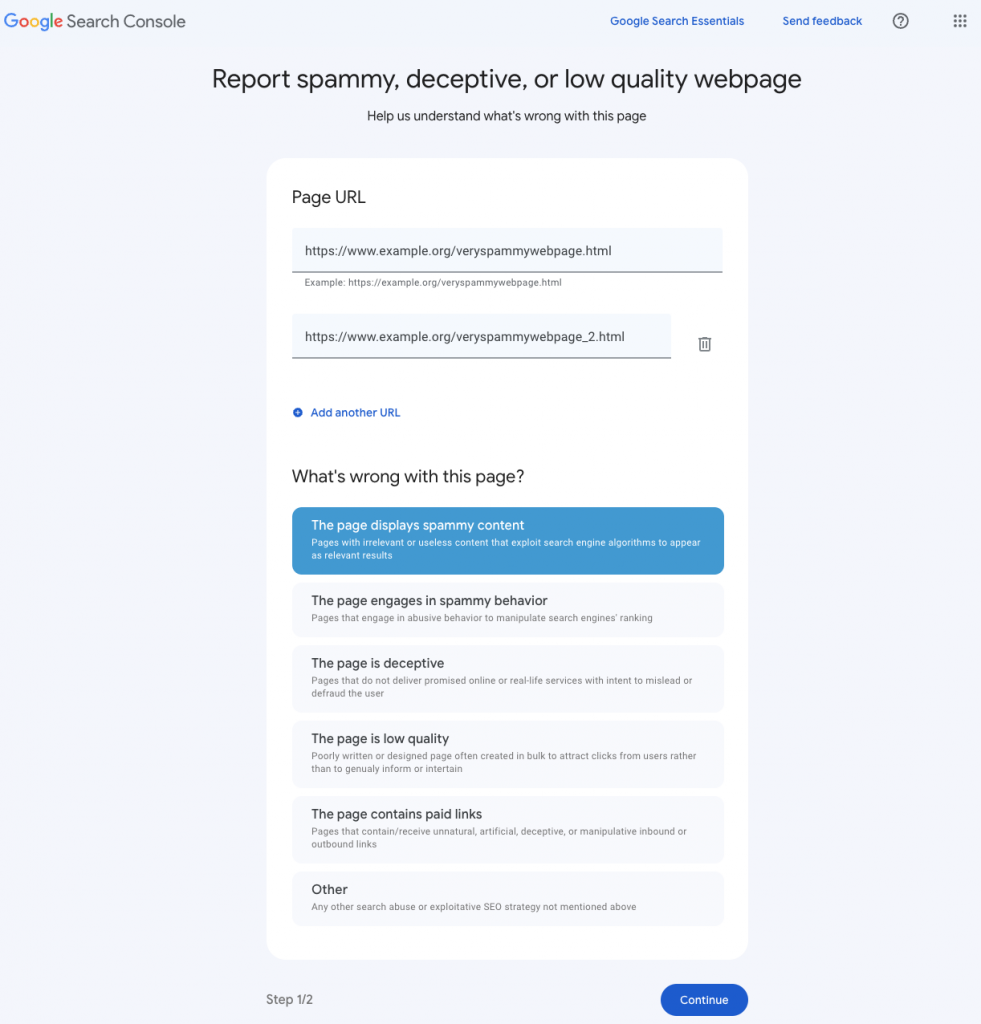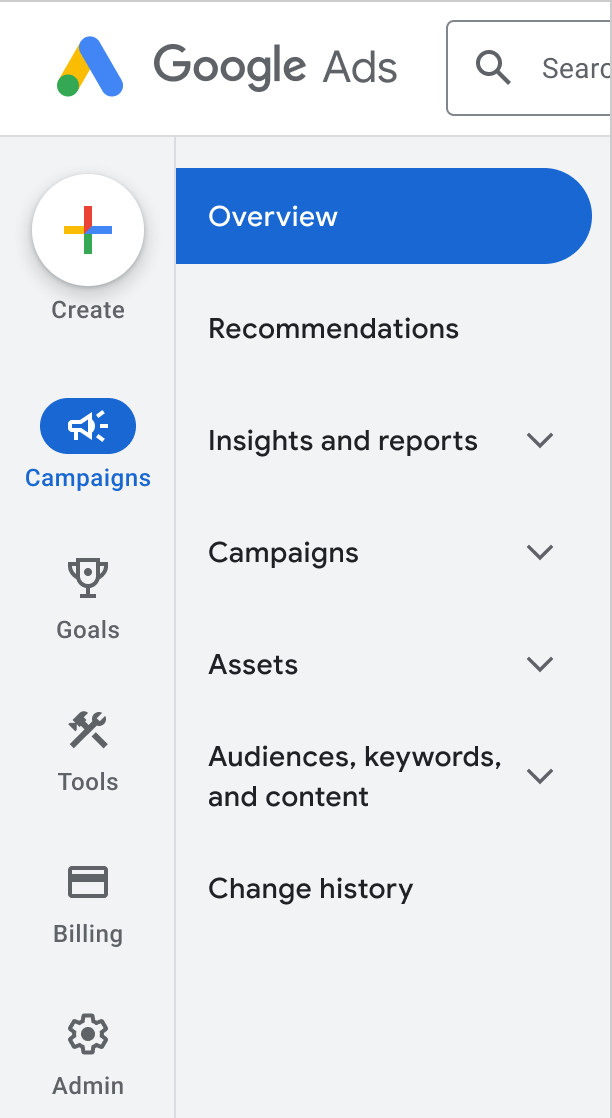It’s officially summer and this month has seen some blazin’ hot digital marketing updates. In this article, we cover the following key updates from June:
- SEO Market Updates: from changes to .ai domains and Looker Studio, to Google’s new spam report and INP report.
- PPC Market Updates: Google Ads API v14 and Google Ads new design.
SEO Market Updates
Google treats .ai domains as generic top level domains
If you’re looking to build a website with a .ai domain and are worried Google will target it to the British Overseas Territory of Anguilla, I have some fantastic news for you.
Google updated their help document in June to reflect that Search now views .ai domains as a generic top-level domain rather than being geo-specific.
Here’s what Gary Illyes had to say on the update:
We just added .ai to the list of generic country code top level domains. What does this mean? In short, nothing.
In long, also nothing in the grand scheme of things: we won’t infer the target country from the ccTLD so targeting Anguilla became a little harder, but then again there are barely any .ai domains that try to do that anyway.”
Looker Studio Update Brings 170 New Fields
For those looking for some more in-depth analysis when building reports, you will be pleased to learn that Looker Studio has added 170 new fields after a huge update.
I won’t list all of the 170 new fields here but highlights include:
- Average session duration.
- Landing page.
- Session & user conversion rate.
- Session conversion rate by event name.
- Page referrer.
To gain access to these sweet, sweet new fields, you’ll need to:
- Click on ‘Data Sources’.
- Choose the source you want to update.
- Click ‘Refresh Fields’ located in the bottom left corner.
- A new window will pop up showing the new fields.
- Click ‘Apply’.
Please note that the number of new fields you have access to will be dependent on the number of conversion events you have. Happy reporting!
Three New Issue Details Added to Video Indexing Report
Google added new detailed actions to the video indexing report found in Google Search Console. In their announcement, they said:
In order to help you better understand this issue and provide you with more actionable reasons, we are breaking down the “Google could not determine the prominent video on the page” reason into three more specific reasons.”
The new issue details are:
- Video outside the viewport: Reposition the video on the page so that the entire video is inside the renderable area of the page and seen when the page loads.
- Video too small: Increase the height of the video so that it’s larger than 140px or the width of the video so that it’s larger than 140px and at least a third of the page’s width.
- Video too tall: Decrease the height of the video so that it’s smaller than 1080px.

It may be the case that you don’t see these new issues in the report yet. Google explained that since the ‘Search Console video indexing report shows 3 months of historical data, you may still see the “Google could not determine the prominent video on the page”’.
This change will allow site owners to see the exact reason why their videos are experiencing issues to overcome problems more efficiently.
Google Releases New Search Spam Report Form
A new form has been released by Google to submit reports of spam, malicious behaviour, paid links, and other search issues. The form also allows users to submit complaints in bulk.
“Various ranking manipulation techniques attempt to compromise the quality of our results and degrade the search experience for everyone. These techniques go beyond the traditional definition of spam. Some sites are extremely poor quality, others are deceptive and harmful to our users. That is why we are expanding the scope of user feedback we want to collect.”

The form allows searchers to report a page that is:
- Displaying spammy content.
- Engaging with spammy behaviour.
- Deceptive.
- Low quality.
- Containing paid links.
It is hoped that this form will make it easier for Google to identify problematic websites by involving users who are having negative experiences first-hand.
INP Report added to Google Search Console
Google is preparing for Interaction to Next Paint (INP) to replace First Input Delay (FID) in 2024 by releasing a new report within Search Console to measure your site’s performance.
Google explained INP within its help documentation:
- “INP (interaction to next paint): A metric that assesses a page’s overall responsiveness to user interactions by observing the time that it takes for the page to respond to all click, tap, and keyboard interactions that occur throughout the lifespan of a user’s visit to a page. The final INP value is the longest interaction observed, ignoring outliers.
- Group INP shown in the report means that 75% of visits to a URL in this group had this value or better.”
This new report gives site owners a ‘heads up’ on how Google will view your pages in reference to the new INP core web vital metric, giving you more time to prepare for the March 2024 deadline.
Google Says Sitemaps Ping Endpoint is Going Away
Google announced in June that it would be ending support for sitemaps ping and the endpoint will stop working by the end of 2023. The Sitemaps Protocol was introduced in 2005 to assist search engines with discovering new URLs, as well as scheduling new crawls of already discovered URLs.
In the blog announcing the change, Google wrote that the protocol is widely popular and hasn’t changed in over 15 years. They also stated that aspects of the protocol have “become less practical in today’s internet”.
Google said that it’s ending the support as internal studies, alongside data from Bing, dictate that “these unauthenticated sitemap submissions are not very useful”. In Google Search’s case, “the vast majority of the submissions lead to spam”.
Site owners can still submit sitemaps through robots.txt and Search Console, however the HTTP requests, or “pings”, “to the deprecated REST endpoint will result in a 404 error”. Google also said that you should use the lastmod element in your sitemap file when confident that the stated date matches when the page actually changed.
Google also added:
If your CMS changed an insignificant piece of text in the sidebar or footer, you don’t have to update the lastmod value for that page. However if you changed the primary text, added or changed structured data, or updated some links, do update the lastmod value.”
AMP Support Launched for GA4
The Google Analytics 4 deadline was a hot focus of June, and Google launched Accelerated Mobile Pages (AMP) support for GA4 in preparation.
If you were using AMP before, you’ll still be able to measure your performance in the same way as Universal Analytics (UA) now everyone is switched over to GA4.
Here’s Google Analytics announcing the change on Twitter:
AMP is now supported in Google Analytics 4, ensuring that publishers using AMP are able to measure their website performance with GA4.
— Google Analytics (@googleanalytics) June 27, 2023
Learn how to implement the integration and get started today: https://t.co/WRkReaGOWZ
PPC Market Updates
Google Ads API v14 Launches
Google Ads saw a substantial update in June with the arrival of API v14. The update brought an improved user experience, enhancing both campaign management and performance.
Here’s the highlights from the update:
- Added the following recommendation types: DynamicImageExtensionOptInRecommendation, LowerTargetRoasRecommendation, RaiseTargetCpaRecommendation.
- Added Customer.offline_conversion_client_summaries to show the status and diagnostic information of the customer’s offline conversion uploads and adjustments.
- Added support for retrieving, creating and updating account-level negative keywords through CustomerNegativeCriterion.negative_keyword_list.
- Added conversion action types and ConversionAction.google_analytics_4_settings to support identifying Google Analytics conversions and determining whether a conversion is imported from a GA4 or Universal Analytics property.
- Removed support for retrieving the campaign_criterion_simulation report.
- Added KeywordPlanIdeaService.GenerateKeywordForecastMetrics to replace multiple methods removed in KeywordPlanService. This new method doesn’t require you to create a keyword plan first.
This Google Ads API update is the second of the year with version 13.1 being released in April. To use the newest features you will need to upgrade your client libraries and client code.
Google Ads Gets a New Lick of Paint
After trialling two new looks, Google Ads has started rolling out its brand new design featuring a main menu on the left of the screen and new page navigation.
The 5 new high-level navigation categories are:
- Campaigns: where you analyse, optimise, and manage your campaigns.
- Goals: where you define, monitor, and update your conversion goals.
- Tools: where you can find tools for:
- Planning.
- Bidding and budgets.
- Troubleshooting.
- Billing: where you monitor your spend and payments.
- Admin: where you manage your team, security, and account settings.
Google stated that this new level of categorisation made the new design “more effective for both new and experienced advertisers”.

The new design has started rolling out for users who took part in the initial trial which started on 2nd March 2023. Everyone else will be moved over to the new design by December.
If you decide the new design isn’t for you, then you have the option to revert back to the good old layout until 2024, so we recommend getting used to it.
If you need assistance getting to grips with the new Google Ads design, or need some last minute help with all things GA4, get in touch with one of our experts today.
by Jack Bell






